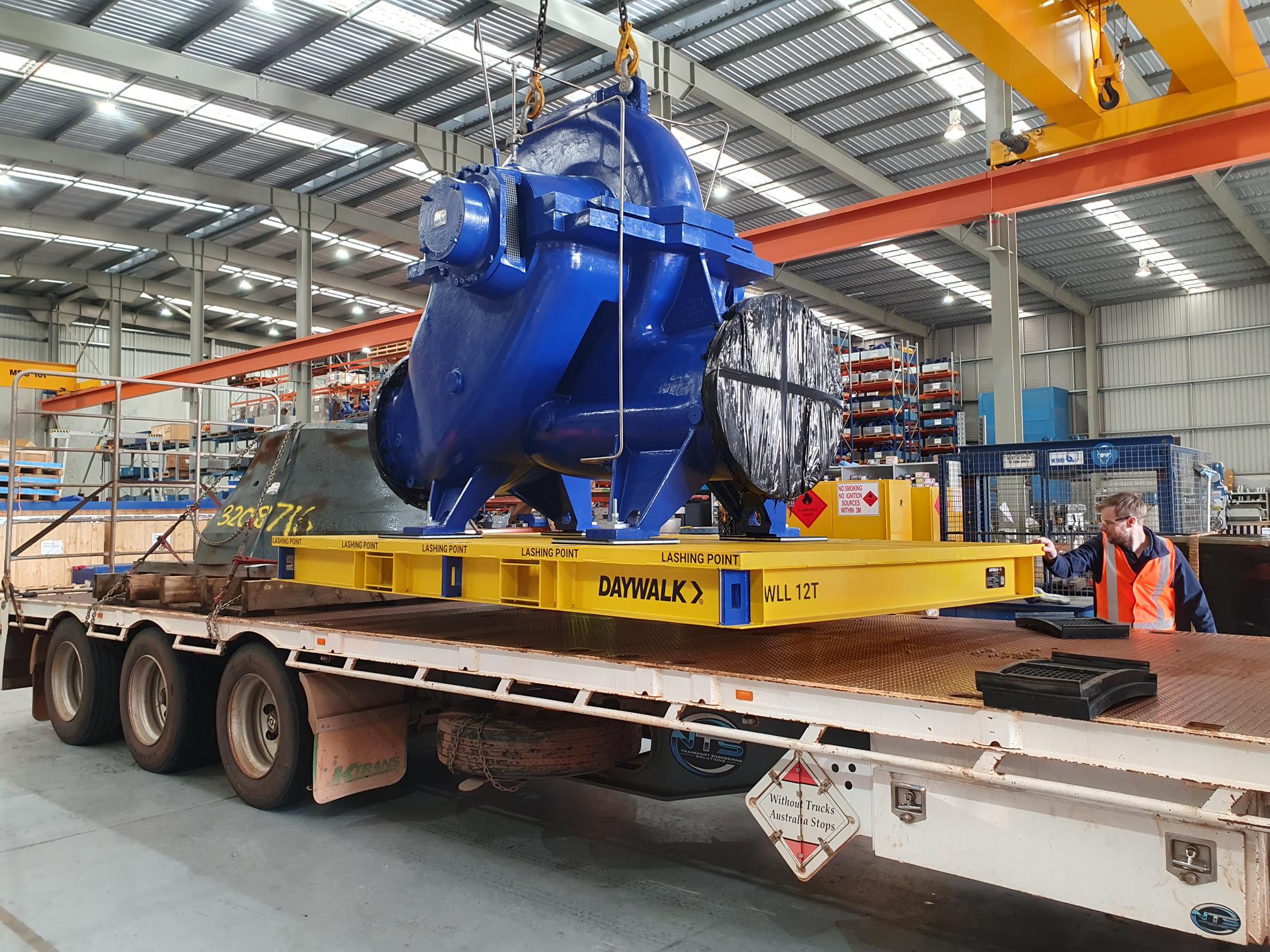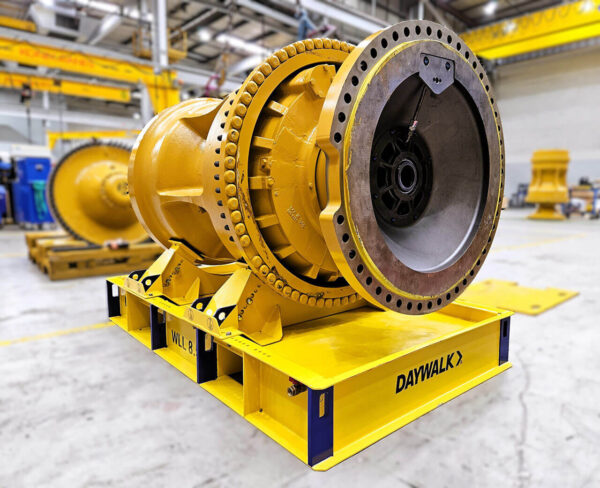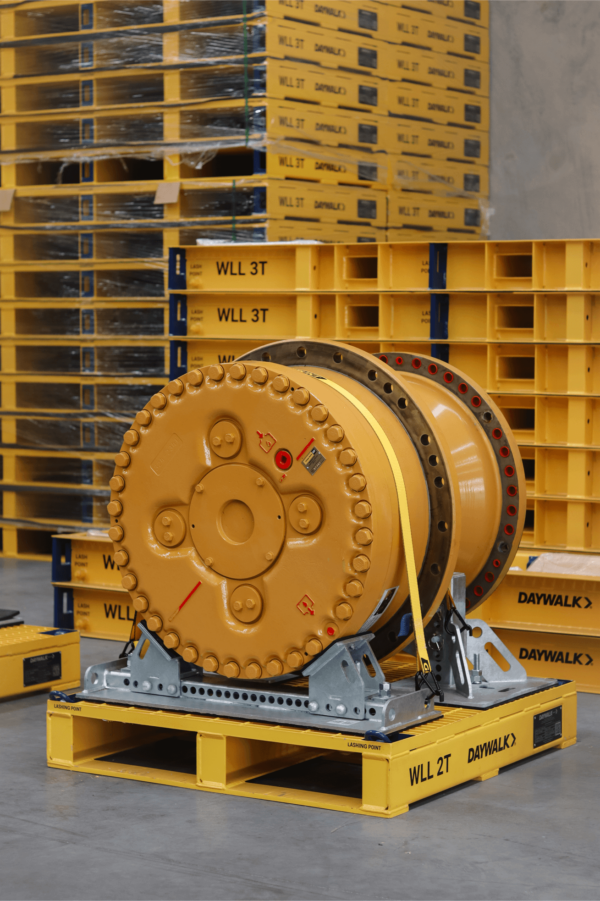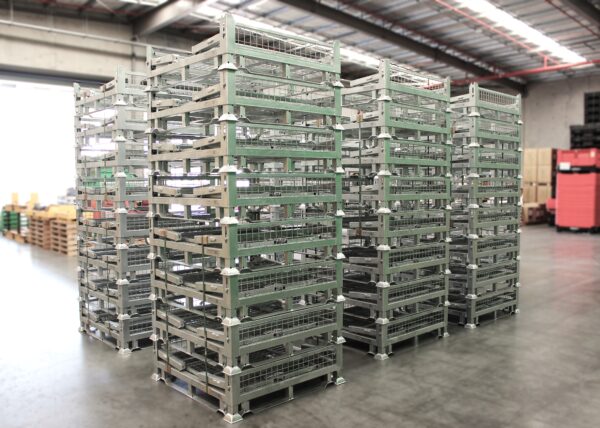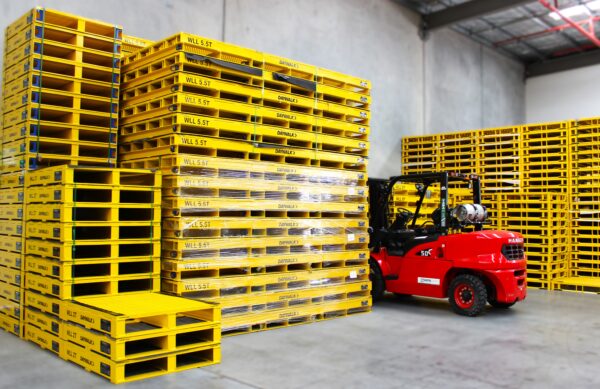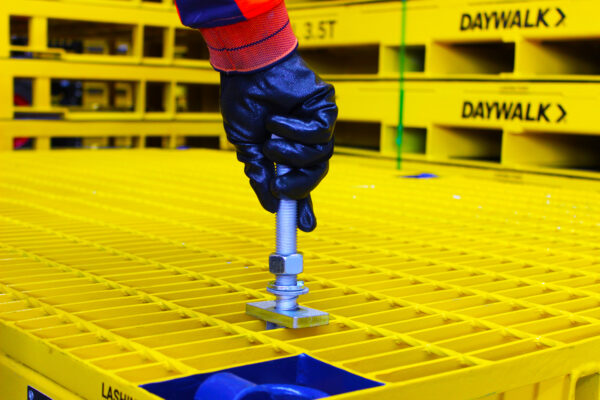The way products are rated is complicated, and there are a lot of factors to consider. DAYWALK certifies and rates all their products, and then from there has created storage and transport ranges. For example, while cages can technically be transport rated, to do so the load would have to be uniformly distributed and arranged the same way every time. Therefore, we generally recommend cages for storage, as opposed to transport. Transport ratings are very multifaceted because there are many angles to consider, including tie down and weight distribution. At DAYWALK, we put a huge focus on transport ratings and safety. Why? Because life is precious, and the stakes are high when heavy components are being transported. In contrast to our cage range, all our transport frames undergo rigorous testing and certification, and are rated with real life scenarios in mind.
Storage Ratings
Storage ratings for heavy machinery components focus on preserving the integrity and functionality of parts while they are not in use. Australian Standards, such as AS 4084 for steel storage racking, set forth requirements for storage systems to ensure they can support the weight and size of heavy machinery components. Proper storage involves using durable and appropriately sized racks, shelves, or containers that prevent damage and facilitate easy access. Additionally, climate control may be necessary to protect sensitive components from extreme temperatures and humidity, which can cause rust or other forms of degradation. Safety measures, such as clear labeling, secure stacking, and restricted access areas, are also critical to prevent accidents and ensure only qualified personnel handle the machinery components.
Transport Ratings
Transport ratings, on the other hand, address the challenges of moving heavy machinery components safely and securely. The National Heavy Vehicle Regulator (NHVR) and related Australian Standards provide guidelines for the transport of oversized and heavy loads. These regulations include specific requirements for vehicle suitability, load securing, and route planning to ensure that components reach their destination without damage or posing a risk to other road users. For example, the load must be adequately secured using chains, straps, or other appropriate devices to prevent shifting during transit. Vehicles used must be capable of handling the weight and size of the machinery parts, often requiring special permits for oversized loads. Additionally, transport operators must ensure compliance with restrictions on travel times, routes, and speed limits to minimize the risk of accidents.
Key Differences & Compliance
While both storage and transport ratings are essential for maintaining the condition and safety of heavy machinery components, they address different aspects of handling these parts. Storage ratings focus on creating a stable, controlled environment to prevent long-term damage and ensure easy access, while transport ratings emphasize the structural integrity of securing methods and safe transportation practices. Compliance with these standards and regulations is crucial to avoid legal penalties and ensure the safety of workers and the public. Businesses must navigate both sets of guidelines effectively, implementing appropriate storage solutions and transport strategies to maintain compliance.
